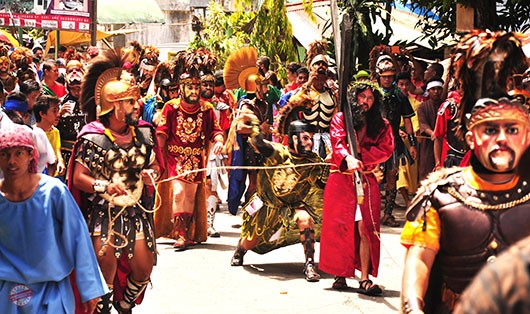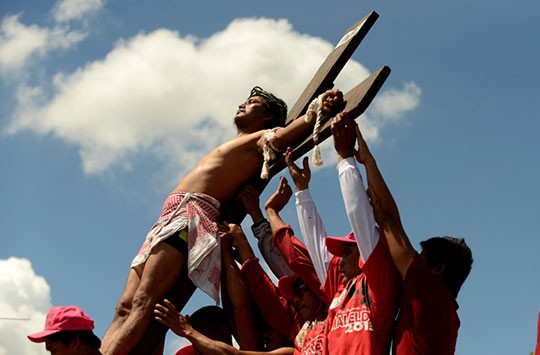The Philippines is known all over the world for its people’s distinctive way of commemorating the Holy Week, referred to as Semana Santa or Mahal na Araw.
It is that time of the year when Filipino Catholics are reminded by the Church to repent for their sins while remembering the days of Jesus’ life on earth before he was crucified on the cross, died, and came back to life again.
Holy week is considered as one of the most important events in the Philippines, second only to Christmas. It is also the most sacred occasion and one that has brought forth a variety of ways Filipinos have made the week-long event uniquely Pinoy.
Visita Iglesia, Via Crucis

It is during these Holy days that most Catholic Pilgrims flock in droves to their local churches to have their 7-churches Visita Iglesia or the visiting of seven different Catholic Churches and following the Via Crucis or the Stations of the Cross of Jesus Christ while praying the Holy Rosary. These activities are part of the penance of Filipino Catholics.
The Pasyon
Pagbabasa ng Pasyon or Reading of the Passion of Christ is also one of the most sacred, and noticeable activities during the week as voices dominate and fill the air that is now devoid of the usual blasts of neighbourhood revelry. In hymns and songs the Pasyon is recounted mostly by Catholic women, beginning from Jesus’ agony in the garden of Gethsemane until the crucifixion and death on the cross.
Moriones

In the island of Marinduque, men and women have been given leave to be less quiet, wear costumes, and masks to re-enact the Moriones or Roman soldiers who captured Jesus. This is an annual festivity in the island during Holy Week.
The Prusisyon
In the province of Cavite, it is during the Holy Wednesday where the images of different saints, images of the Virgin Mary, and Jesus Christ, including the replica of the Black Nazarene are carried in processions in different towns and barangays. Many Catholic devotees join the procession while praying the Holy Rosary as part of their penance. After the procession, the images are brought to the Church for the priest’s blessing and the decorations on the statues including flowers are given to the pilgrims.
Crucifixion

There are also the faithful who would rather show their penance through actual crucifixion. In San Fernando Pampanga men like Ruben Enaje portray themselves as Jesus Christ for the Maleldo Festival. Maleldo is an annual festival in San Fernando Pampanga where the people re-enact the Passion of Christ. Enaje has been crucified on the cross yearly for more than twenty years during Good Friday. The role play starts from Enaje’s house where he will be arrested by the ‘Biblical Roman Soldiers.’ From there he will carry the cross to Barangay Cutud where he will be crucified. According to Enaje, it is his way of showing his gratitude to the Lord for saving him from his illness and for all the blessings that he and his family has received.
Salubong
Finally, in the dawn of the Easter Sunday, Catholic pilgrims celebrate the Salubong or the meeting of Jesus Christ with his mother Mary after he rises from the dead. Women Catholic pilgrims will “come with the Virgin Mary” in her search for Jesus who was missing from his burial place. Upon reaching the Church, Mama Mary’s face covered with black cloth as a sign of her agony will be lifted by a child who portrays an angel. Then Jesus Christ who is escorted by the men Catholic Pilgrims will see His mother. They will be brought inside the Church welcomed with a joyous song from the band and a Holy Mass will be celebrated for the risen Christ.
These traditions have been carried out by many Filipinos for a very long time – traditions that were passed from generation to generation. Filipino Catholics believe that these traditions should be carried out in order to preserve the importance of the Holy week in the Philippines. Tourists around the world see these traditions as displays of the Filipino culture. Whichever perspective you hold, one thing is true – Filipinos have made these Holy Week traditions uniquely Pinoy.










